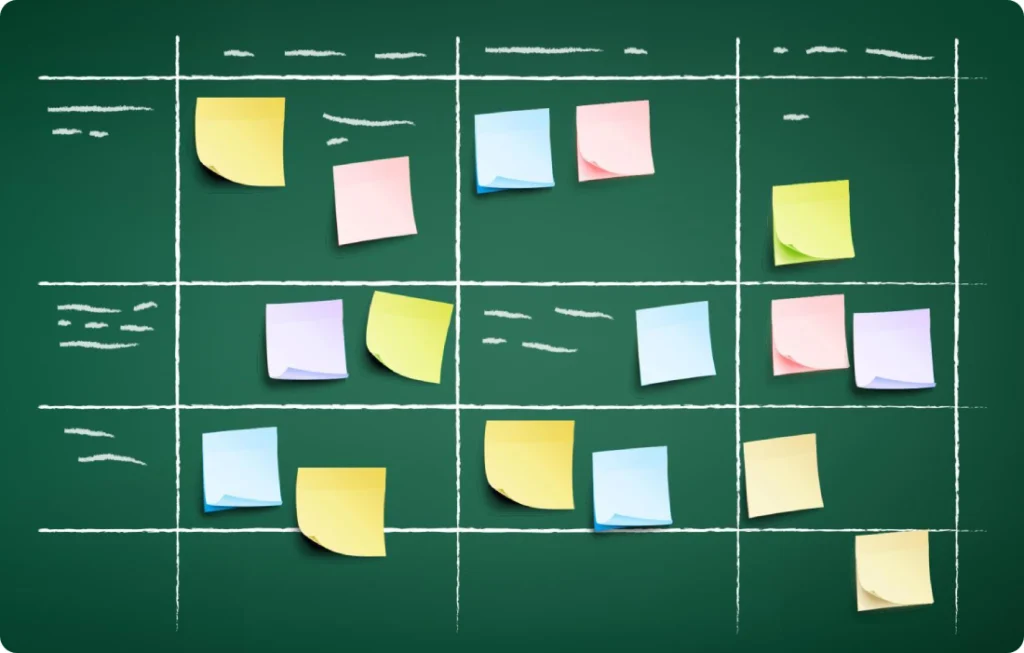8 Real World Challenges of Agile Teams
Omar Z. Abela
March 08, 2023
30 min read

Product Ownership
Product ownership in Agile involves managing the product backlog, prioritising features, and ensuring that the development team is working on the most valuable features for the business. Product ownership is a challenging role that comes with its own set of difficulties. Here are some of the challenges of Agile teams:
#1. How can the product owner balance the needs of stakeholders when different stakeholders have different priorities and needs?

Overall, it’s essential to balance the needs of stakeholders as much as possible. By communicating openly, seeking feedback, negotiating, and using data to inform decisions, you can find solutions that meet the needs of all stakeholders to the greatest extent possible.
#2. We are in the middle of our sprint and a stakeholder asks for something urgent, what should we do?

Your key steps in this scenario are:
Step #0: Negotiate
- Is the requirement relevant to the current sprint goal?
- Does the stakeholder has other priorities within the active sprint for which they are willing to swap?
Step #1: Quick analyses of the requirement
- Is the requirement a story a feature or an epic?
- If not a story, which parts are the most urgent?
- On the urgent part of the requirement, do I need to involve someone from my team in a quick call to roughly come up with first estimate of capacity needed?
- Do I have capacity for it?
Step #2: Understand your capacity
- How much actual capacity do you have in the current sprint?
- Do we have 10% – 20% capacity free from sprint planning?
- Are we at the beginning, mid or end of the sprint?
- Beginning (at 80% capacity and many unknowns, higher chance of firefighting at mid or end near end sprint)
- Mid way (Some capacity may have already cleared plus better knowledge gained of the sprint, capacity estimation is nearer to accuracy).
- Near end (Higher capacity, greater knowledge of the sprint unknowns, better chance of commitment)
Step #3: Is it a product or personal priority?
- Can the priority wait for next sprint?
- Who is the gatekeeper for the product requirement?
- Is he aware of the priority and can he confirm the urgency?
- Is the gatekeeper willing to give up any of the current active sprint commitments to make room for the new priority?
- Can I get the gatekeeper and the stakeholder to agree on what is priority, and if not can I involve my manager?
Step #4: Making it to the active sprint. If the new priority qualifies for the active sprint through process of elimination, your next steps should be:
- Build the stories for the priority and weight them.
- Add the stories to the active sprint
- Uncommon to the stories negotiated outside of the sprint but keep them inside the active sprint as uncommitted stories.
- In JIRA, rank uncommitted stories at the foot of the sprint.
#3. What tools and techniques can a product owner, together with their agile team, use to ensure that the backlog is updated and maintained in a large and complex products?

- Agile backlog management tools:
There are several agile backlog management tools available that can help the team to manage a large and complex backlog. Some popular tools include Jira, Trello, and Asana. These tools can help to organize the backlog, prioritize user stories, and track progress. - Prioritization techniques:
To keep the backlog updated, the team can use prioritization techniques such as MoSCoW (Must-have, Should-have, Could-have, Won’t-have), Kano Model, or Value vs. Complexity. These techniques can help the team to prioritize user stories based on their importance to the product and the level of effort required to deliver them. - User story mapping:
User story mapping is a technique that helps to visualize the product backlog and prioritize user stories based on user needs and workflows. This technique helps the team to understand the bigger picture of the product and prioritize user stories based on their importance. - Backlog grooming:
Backlog grooming is a regular meeting that the team can use to review and update the backlog. During this meeting, the team can add new user stories, remove duplicates, refine user stories, and prioritize user stories based on their importance. This helps to keep the backlog updated and aligned with the product vision. - Sprint planning:
Sprint planning is another essential meeting that the team can use to update the backlog. During this meeting, the team can review the backlog, prioritize user stories, and select the user stories to be delivered during the upcoming sprint.
#4. How do we write effective product goals when there are so many orphan tickets prioritised in our sprint plan?

It is important to note, that continuous production of orphan tickets that are very hard to map can be the sign of poor planning. While Agile cultures change rapidly, quarterly plannings should be in place with proper agreed objectives and key results.
However, when there are many orphan tickets prioritised in the sprint, it can be challenging to write effective product goals. In such unavoidable scenarios we could practice the following:
- Focus on the most important orphan tickets: Start by identifying the most critical orphan tickets that are prioritized in the sprint. Determine which ones are essential to the overall product vision and focus on those first. This can help you to write effective product goals that align with the most important orphan tickets.
- Use SMART criteria: When writing product goals, use the SMART criteria (Specific, Measurable, Achievable, Relevant, Time-bound). This will help you to write goals that are clear, quantifiable, and achievable within a specific timeframe. This can help you to focus on the most important orphan tickets and ensure that the goals are achievable within the sprint.
- Collaborate with the team: Collaborate with the development team to identify the orphan tickets that are most critical and determine which ones should be prioritized. By working closely with the team, you can ensure that the goals align with the overall product vision and that they are achievable within the sprint.
- Use user-centric language: When writing product goals, use user-centric language that focuses on the needs and desires of the end-users. This can help you to identify which orphan tickets are most critical and ensure that the goals align with the needs of the users.
- Refine the backlog: If there are too many orphan tickets, it may be necessary to refine the backlog to ensure that the most critical orphan tickets are prioritized in the sprint. This can help to ensure that the goals align with the overall product vision and that they are achievable within the sprint timeframe.
When writing effective product goals in the context of orphan tickets, it’s essential to focus on the most critical orphan tickets, use the SMART criteria, collaborate with the team, use user-centric language, and refine the backlog if necessary. This can help to ensure that the goals align with the product vision and that they are achievable within the sprint timeframe.
#5. How do we deal with changes while the product life cycle is in process. For example, when the sprint is ongoing?

- Emphasize collaboration and communication: Agile teams should encourage collaboration and communication between team members, stakeholders, and customers to stay informed about changes to requirements. Regular meetings, such as daily stand-ups, sprint reviews, and retrospectives, can help keep everyone on the same page and facilitate effective communication.
- Use Agile artifacts: Agile artifacts, such as product backlogs, user stories, and acceptance criteria, can help teams capture changing requirements and keep track of progress. Regularly updating these artifacts can help ensure that everyone is aware of any changes and that the team is working towards the same goals.
- Prioritize requirements: When requirements change, it’s essential to prioritize them based on their impact on the project’s goals and value to the customer. Prioritizing requirements ensures that the team focuses on the most important changes first and delivers the most valuable features to the customer.
- Adapt the sprint plan: If requirements change mid-sprint, it may be necessary to adapt the sprint plan. This may involve reprioritizing work or adding new tasks to the sprint backlog. Agile teams should be flexible and willing to adjust their plans as needed to accommodate changes.
- Embrace change: Agile teams should embrace change as an opportunity to improve the product and meet the customer’s needs. Instead of viewing changing requirements as a challenge, teams should approach them with a positive attitude and a willingness to adapt.
#7. As a product owner, I am faced with piling up tasks, how can I manage my time effectively?

As a product owner, managing time effectively is crucial to ensure that the product is delivered on time and meets the needs of the customers and stakeholders. Here are some strategies that a product owner can use to manage their time effectively:
- Prioritize tasks: Identify the most critical tasks that need to be done and prioritize them based on their impact on the product and the stakeholders. Use tools such as product roadmaps and backlogs to help prioritize tasks.
- Set goals: Set specific, measurable, and achievable goals for each sprint and for the overall product. This will help you to stay focused and ensure that you are making progress towards the product’s objectives.
- Schedule time for important tasks: Schedule time for important tasks such as user research, stakeholder meetings, and backlog refinement. This will ensure that you have enough time to complete these tasks and that they are not neglected.
- Delegate tasks: Delegating tasks to the development team can free up your time and allow you to focus on more critical tasks. This can include tasks such as reviewing user stories, prioritizing the backlog, and attending meetings.
- Use Agile methodologies: Agile methodologies such as Scrum and Kanban can help you to manage your time effectively by providing a framework for organizing work, setting priorities, and delivering value quickly and efficiently.
- Use tools and software: Use tools such as project management software, collaboration tools, and communication tools to help manage your time effectively. These tools can help you to stay organized, communicate effectively with the team and stakeholders, and track progress.
- Manage interruptions: Manage interruptions such as emails, phone calls, and instant messages by setting aside specific times to check and respond to them. This will help you to stay focused on important tasks and avoid distractions.
#8. As a product owner who comes from business analyses background, I find it hard to communicate effectively with the development team without a technical background.

Communicating effectively with the development team as a product owner without a technical background can be challenging, but there are several strategies that you can use to overcome this challenge:
- Learn the basics: You don’t need to be a technical expert, but it’s helpful to have a basic understanding of the technologies and tools that the development team is using. Take the time to learn the basics, such as programming languages, databases, and software development methodologies. This will help you to understand the development process and communicate more effectively with the team.
- Use visual aids: Visual aids such as diagrams, flowcharts, and wireframes can help you to communicate complex ideas more effectively with the development team. Use these visual aids to illustrate your ideas and help the team understand your requirements.
- Use plain language: Avoid technical jargon and use plain language to communicate your ideas. This will help the team understand your requirements more easily and avoid confusion.
- Build a relationship: Building a strong relationship with the development team can help to overcome communication barriers. Take the time to get to know the team members, understand their roles and responsibilities, and build trust and respect.
- Be open to feedback: The development team can provide valuable feedback on your ideas and requirements. Be open to their feedback and suggestions, and use it to improve your understanding of the development process and the product requirements.
- Collaborate with the team: Collaboration is key to effective communication between the product owner and the development team. Collaborate with the team on the product roadmap, backlog, and user stories. This will help to ensure that everyone is on the same page and working towards the same goals.
The utmost important thing for the Agile team to know is the needs and desires of the target customers and stakeholders. Understanding the users and the market is the foundation of creating a product that solves their problems and meets their needs. This involves gathering and analysing feedback, conducting user research, monitoring market trends, and constantly seeking input from the customers and stakeholders. A successful agile team must be able to translate this knowledge into a clear and concise product vision, roadmap, and backlog in order to create successful new system behaviour.